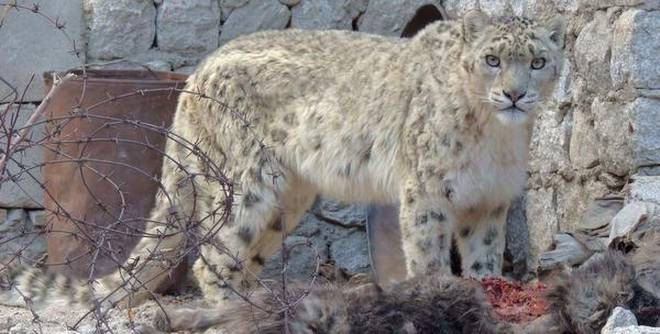Today, they are social media hits and the foundation for a thriving winter tourism industry

Charudutt Mishra spent years living in Spiti, Himachal Pradesh, without catching sight of a snow leopard. Perhaps Kibber village where he was based wasn’t good habitat. By the 1990s, more people had gone in search of the mystical animal in its mountain fastness than had seen one. Only one photograph, taken by biologist George Schaller in 1970, circulated for more than 20 years. Catching a glimpse of one was like being granted a benediction.
Not everyone ached to see a snow leopard. To resident communities, the animal brought bloodshed and loss of domestic animals. Over the years, they retaliated with preemptive violence, killing any that became trapped within livestock enclosures.
While conceding that ‘do not kill’ is one of the precepts of their Buddhist philosophy, a village elder said, “We don’t have the ability to live with them and the damage they cause.” This admission opened Mishra’s eyes to their reality. “It isn’t enough to preach tolerance of predators,” he says.
Like other researchers studying the losses borne by communities, Mishra calculated the economic cost of livestock lost to predators. It took him a while to understand money wasn’t the only driving force of villagers’ antipathy.
Women, in particular, spend a lot of time tending to their animals and caring deeply about their welfare. When snow leopards kill one of these animals, they feel as devastated as those who lose their pets.
Wild prey
Both villagers and scientists were under the impression that domestic animals were the cats’ main sustenance. Mishra and the research team from the Snow Leopard Trust and Nature Conservation Foundation investigated. Snow leopard poop was chock-full of the fur of wild prey such as bharal and ibex. Since the predators didn’t take domestic animals often, securing livestock wouldn’t deprive snow leopards.
With shepherds watching over cows, goats, and sheep as they graze in the meadows, snow leopards dare not take any but the occasional straggler. But they inflict severe damage at night when they occasionally sneak into poorly built enclosures. The jostling of animals in a confined space sends the cats into a killing frenzy, and the owner may find his entire flock dead at dawn. Mishra and his team help reinforce these indoor pens to keep out the predators.
Creative solution
Protecting yaks that free-range in the pastures throughout the summer months called for a creative solution. Bringing them back every evening posed practical difficulties. Nor could someone keep an eye on them. It was inevitable that predators would kill a few. The team suggested an insurance scheme might help offset the losses, but it was up to the villagers to frame the rules and operate it.
The conservation team suggested the villagers set aside a tract of pastureland as a reserve, where the snow leopards’ wild prey can thrive. All these efforts helped people accept snow leopards and gradually the animals grew in number. Despite the researcher’s initial misgivings, the area was in fact fine habitat.
Mishra saw his first snow leopard 10 years after he first stepped foot in Spiti. While skipping from rock to rock across a fast rushing stream, he lost his footing and fell into the freezing water. He bashed his head against rocks before his colleagues dragged him ashore. Bleeding and exhausted, he followed the others up the steep incline. When he paused to catch his breath, a rock moved. Snow leopard! The dream had taken a decade and a gash in his head to finally come to life.
Back in Kibber, when he narrated his adventure, one of his friends joked, “If this is the price you had to pay to see the snow leopard, you should have jumped into the river 10 years ago.”
Today, the village’s snow leopards are social media hits and the foundation for a thriving winter tourism industry. Luckily, tourists don’t have to fall into a river to spot the mystical snow leopard.
Janaki Lenin is not a conservationista but many creatures share her home for reasons she is yet to discover.
First published by The Hindu on 1 Aug. 2020
Ghost of the Mountains – a children’s book
The residents of the village Ang find a strange visitor one morning, and want to kill it. A young lad feels differently.